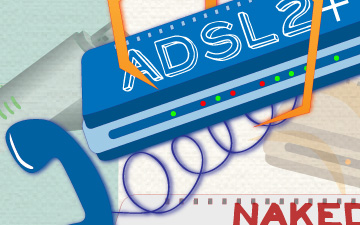Guide to choosing the right broadband plan in Australia
LEON Saw deciphers the jargon surrounding broadband internet plans in Australia and offers some advice on choosing one.
Choice is a wonderful thing to have, but too much of it, and you end up with analysis paralysis.
With more than 12 internet service providers (ISPs) here in Australia, each of them offers a myriad of broadband plans with various combinations of – and at times confusing – features. Trying to select the one that best suits your budget and needs as an international student can be a mind-boggling experience.
To do so without deferring the decision or palming it off to your poor friend or housemate, you’ll need to understand what type of broadband each plan offers, how much data is allocated and when you can use it, the length of the plan, and exactly how much you’ll be paying for it all.
Broadband Type
The main types of broadband offered are ADSL2+, Naked Broadband, and Mobile Broadband.
ADSL2+ has a maximum download speed of 24,000 kilobytes per second (kbps) and is delivered to your home via the telephone socket. Hence before signing up for a plan with it, you’ll need to have a home phone plan from an Australian telecommunications company. Some ISPs have their own home phone plans and bundle them with their ADSL2+ broadband plans into a package, which may or may not be cheaper depending on how often you use the home phone.
Naked Broadband works like ADSL2+ but doesn’t need a home phone plan to work. Plans with it aren’t necessarily cheaper than ADSL2+ bundles though.
Mobile Broadband offers download speeds of up to 1,500 kbps and can be accessed from most parts of Australia via the included USB modem.
Data Allowance
The data allowance of broadband plans range from as low as a few gigabytes to being unlimited. They indicate how much data (measured in bytes) the ISP allows you to transfer between your device and the internet every month, for the duration of the plan.
In some plans, the data allowance is split into peak and off peak usage. This means if your broadband plan states that its data allowance is 500 gigabytes (GB), 250GB peak, 250GB off peak a month – it means up to 500GB of data may be transferred each month, and of the 500GB, 250GB is allocated for use during peak hours and the rest during off peak ones. The peak and off peak hours vary depending on the ISP and the broadband plan.
If you use up your data allowance before a month is up, you’ll be charged for any extra data that goes between your device and the internet, or your broadband speed will be reduced to the point where even checking emails is a hassle, depending on the conditions of your plan.
If you use up the data allowance allocated to the designated peak hours, accessing the internet during that period could also incur charges for your extra data usage, while the stipulated off peak hours will remain unaffected, and vice versa.
After a month, the allowance would be 500GB again, regardless of whether you had any data left from the previous month.
Length, Cost and Additional Fees
Broadband plans vary in length, from a month up to 24 months, and can usually be renewed after they expire.
The cost of broadband plans is advertised as monthly payments until the expiration date, with minimum total cost indicated. However, you should still examine the fine print as each ISP has its own additional setup charges as well. ISPs in Australia have been known to fall afoul of the law with unethical advertising.
Some general recommendations
So hopefully, you’d now have a better grasp of the terms and conditions of broadband plans offered in Australia. Here are a couple of general recommendations to help you decide which one to go for.
If you play video games online, on a home computer, go for the ADSL2+ or Naked Broadband, depending on the home phone usage. If you use a laptop or mobile device to read emails and surf the internet on the go, you’ll be better off with the Mobile Broadband.
If you stream plenty of videos, you’ll need a broadband plan with a sizable data allowance. Or, if you don’t want to worry about exceeding the allowance and coping penalties, take the unlimited option. Otherwise, a data allowance of few gigabytes is more than sufficient for web browsing.
Last but not least, obviously don’t choose a broadband plan with a duration that’s longer than your remaining time in Australia, or a plan that you can’t afford.


